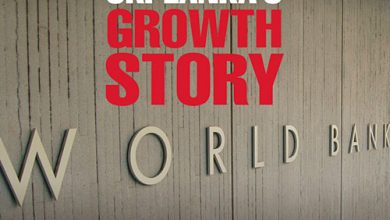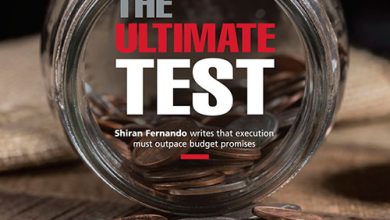US FISCAL POLICY

THE FED’S POLICY PIVOT
Samantha Amerasinghe believes the Fed is treading cautiously on policy

Chair of the Federal Reserve Jerome Powell expressed confidence that the central bank would achieve a soft landing by containing inflation without causing a recession. Though the direction of travel and timing seems right to adjust policy, the path forward isn’t clear cut – partly due to the uncertain outcome of the forthcoming US election.
Powell’s speech at the Jackson Hole Economic Symposium in August confirmed expectations of an interest rate cut at the central bank’s gathering in September, prior to the election in November.
He indicated that “the time has come for policy to adjust” but the timing and pace of rate cuts will depend on the evolving outlook, the balance of risks and incoming data.
Powell expressed confidence that inflation is on track to achieving the two percent goal but acknowledged downside risks to the labour market had increased with signs of cooling labour market conditions.
His remarks at the annual symposium were the strongest signal yet that the Fed will soon cut interest rates from the current 23 year high of 5.25-5.5 percent.
First viewed as transitory, inflation quickly morphed into a persistent issue for central banks globally and consumers alike, as it was exacerbated by wars in Ukraine and the Middle East. This has made the path to the two percent target all the more challenging.
The fact that it has taken so long for the US Fed to consider cutting rates speaks to the extent of the inflation problem that has persisted for the past three years.
However, the past 12 months have been a game changer with inflation falling sharply over the second half of last year and moving well off its 2022 peaks. And now it appears to be on track to hit the Fed’s two percent target.
Nevertheless, policy makers are aware of the challenges ahead – notably, ensuring that the pace of interest rate cuts is right is of paramount importance and a key concern. Interest rate cuts will align the US central bank with many of its peers, which have eased monetary conditions as inflation has fallen across developed economies.
The European Central Bank (ECB), Bank of England (BoE) and Bank of Canada lowered interest rates this summer, and are expected to reduce them further in the coming months.
Governor of the Bank of England Andrew Bailey intimated that it’s “too early to declare victory” over inflation. Nevertheless, the risks of persistent price pressures appear to be receding. The UK’s central bank lowered its benchmark interest rate in August and Bailey’s comments suggest that he is growing more confident about further cuts.
However, the BoE has taken a cautious approach to cutting rates and reinforced expectations that they will continue to hold in September before borrowing costs are expected to be lowered again in November.
Similarly, the ECB has warned that its inflation goal is not yet secure. The European Central Bank reduced its key deposit rate by a quarter point to 3.75 percent in June. This was the first cut in almost five years; and it was holding firm in July. Two additional quarter point cuts are expected this year.
The contentious nature of the US presidential election could prove to be challenging for the Fed, given the uncertainty of its outcome and macroeconomic policies that will ensue. Both parties have very different fiscal, currency, trade and regulatory policy positions so the Federal Reserve’s plans for monetary policy will turn on the outcome.
And the likelihood of inflation accelerating in 2025 remains considerable because fiscal policy is likely to be loose under either a Kamala Harris or Donald Trump administration.
In addition, the threat of inflation would be greater if former president Trump wins, as tariffs will rise substantially, and the large-scale deportation of migrant workers will drive prices up due to a shortage of workers in certain sectors and production cuts.
Currently, markets seem to be confident that the Federal Reserve will embark on a cycle of interest rate cuts through 2025 and 2026 – so a sudden shift in policy could be particularly damaging.
Central banks don’t like to make abrupt changes to policy direction unless there’s an obvious shock. However, given the uncertain economic outlook for the US post-election, the Fed needs to prepare for the high probability of a shift to tightening interest rates by mid-2025.
The Federal Reserve is in a tricky position when providing a basic economic reality check to markets and the public while avoiding making any comments about the competing parties or candidates.
Its monetary policy stance could reverse after the election and it needs to start laying the groundwork for a possible pivot. Leaving the change in forecast to a November surprise may set markets and households up for a shock.






